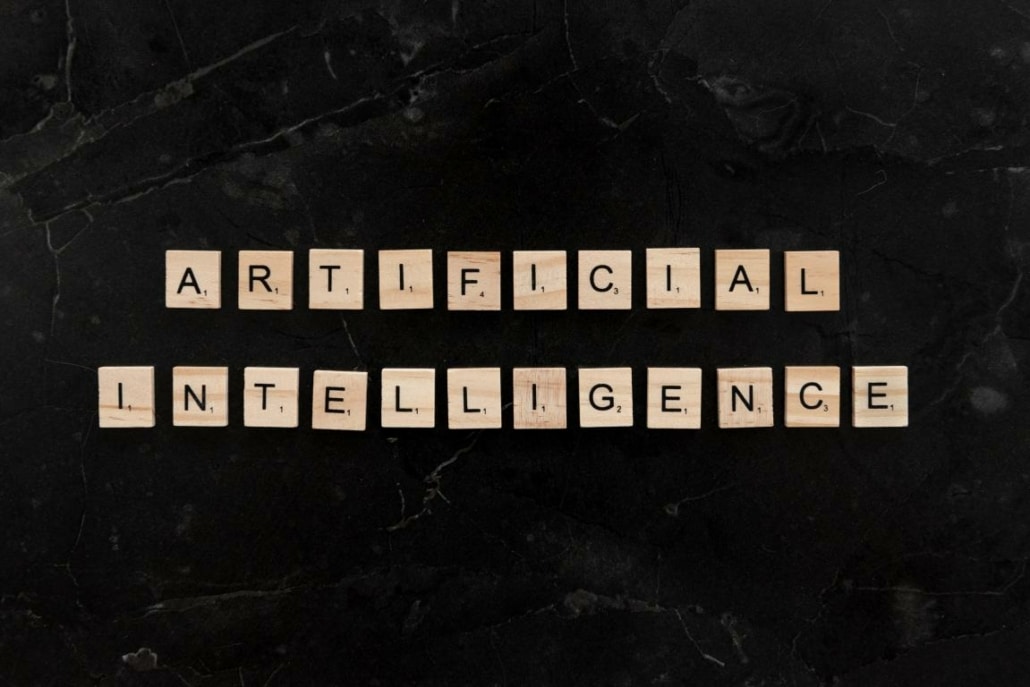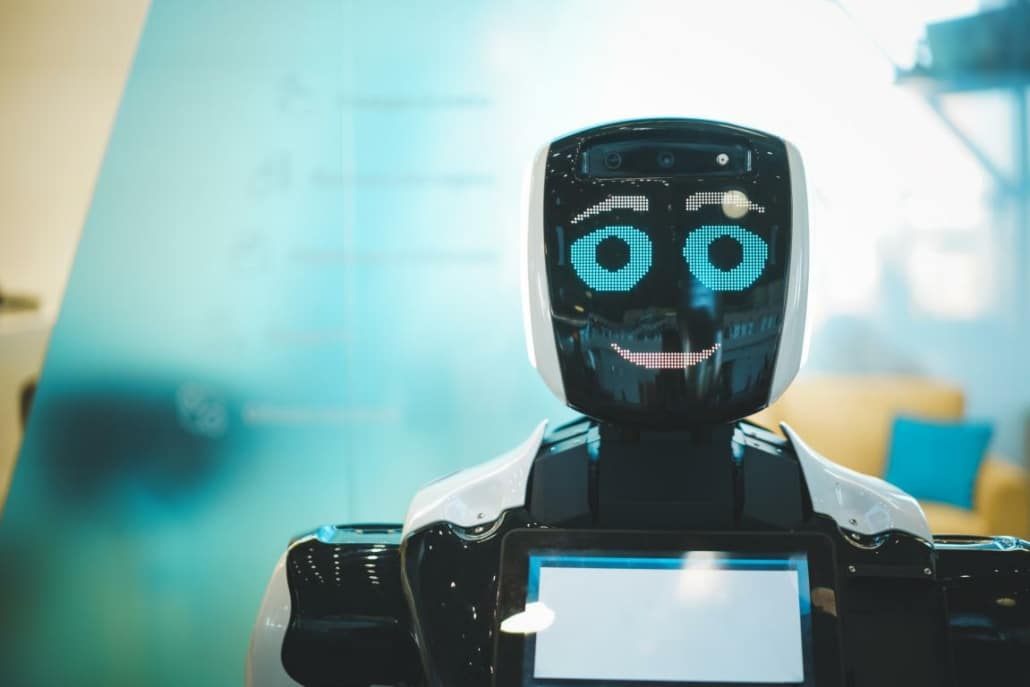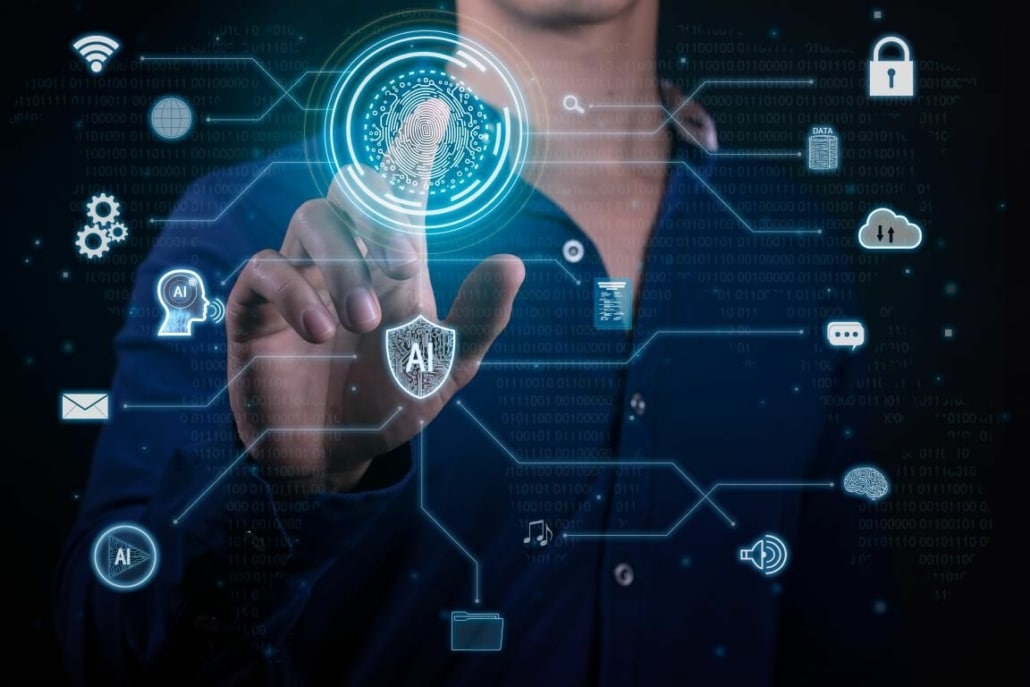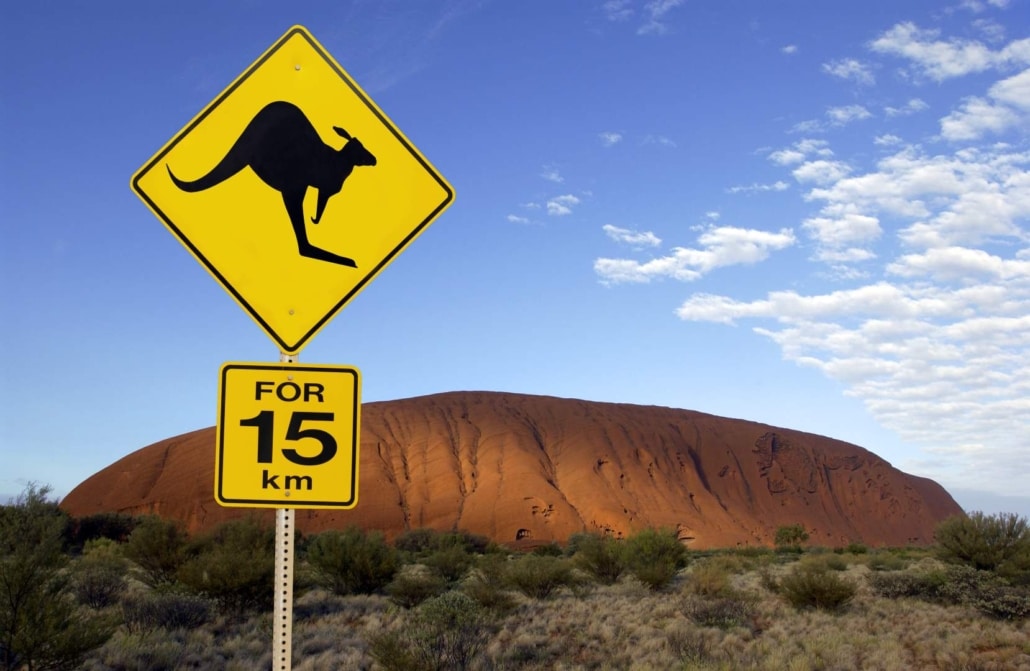AI in Tourism: The Future of Personalized Travel – Part 8 of 8

Artificial intelligence by 9_fingers_
.
This is Part 8 of a 8-blog posts series “Exploring the Intersection of Artificial Intelligence and Tourist Experiences: Insights into AI-Driven Customization and Its Impact on Tourism”.
.
4.2 AI’s Transformative Role in Shaping Tourist Experiences
The confluence of AI and tourism is set to redefine the travel landscape, emphasizing personalization, convenience, and immersive virtual experiences.
- Machine Learning’s Predictive Power:
Machine learning is revolutionizing how tourism businesses cater to their clientele. Companies like Amadeus are leveraging AI for solutions such as revenue management and merchandising (Amadeus, 2023). By anticipating tourist inclinations, businesses can craft bespoke experiences, fostering loyalty and satisfaction (Chen, Xu, & Gretzel, 2020).
- Virtual Reality (VR) Tours:
VR tours offer a novel way for tourists to virtually traverse destinations, promoting locales and training tourism professionals (Gretzel, Sigala, Xiang, & Koo, 2018).
- AI-Powered Travel Assistants:
Digital travel assistants, like chatbots, are streamlining travel planning, with Amadeus leading the charge in refining the travel journey (Amadeus, 2023).
- Extended Reality (XR) and Generative AI:
XR is crafting immersive experiences for company retreats, while Generative AI is enhancing content and experiences in tourism (TheNextWeb, 2023).
- AI-Human Synergy and Voice Tech:
AI’s collaboration with humans is enhancing decision-making and customer service. Concurrently, voice technologies and AI chatbots are simplifying interactions and providing round-the-clock service (Revfine, 2023).
In essence, AI’s integration, spearheaded by pioneers like Amadeus, is revolutionizing tourism operations and enhancing tourist experiences. These trends herald a transformative era for global tourism, emphasizing AI’s diverse applications and its potential for future innovations.
.
5. Concluding Thoughts and Future Research Avenues
This series delved into AI’s intersection with tourism, emphasizing AI-driven personalization.
From an AI overview to its real-world applications in tourism, the series showcased AI’s potential to craft hyper-personalized, efficient, and seamless travel experiences.
The literature review and case studies underscored AI’s transformative role, from recommendation systems to facial recognition.
Emerging trends, from predictive analytics to voice services, highlighted AI’s expansive influence, with industry leaders like Amadeus at the forefront.
Yet, as AI’s footprint grows, a nuanced understanding of its ethical and societal ramifications is paramount.
Balancing AI’s prowess with human oversight is crucial, ensuring responsible and ethical applications.
Future research could delve into AI’s specific applications across tourism sectors, from hotel management to transportation.
Ethical considerations, like data privacy, warrant in-depth exploration.
A mix of case studies, surveys, and experimental designs could offer a holistic view of AI’s impact on tourism.
In summation, this series posits that AI, with its promise of personalization, will be pivotal for tourism’s future competitiveness. Far from replacing human touchpoints, AI augments them, promising a new era of hyper-personalized and enriched travel experiences.
.
Previous posts:
AI in Tourism: Revolutionizing Personalized Experiences and Operational Efficiency – Part 1 of 8:
https://www.andrearossi.it/en/ai-tourism-personalized-experiences-operational-efficiency/
.
AI-Powered Personalization: Elevating Tourist Experiences – Part 2 of 8:
https://www.andrearossi.it/en/ai-powered-personalization-elevating-tourist-experiences/
.
AI’s Role in Crafting Personalized Tourist Experiences: A Literature Review – Part 3 of 8:
https://www.andrearossi.it/en/ai-tourist-experiences-literature-review/
.
Revolutionizing Tourism with AI: Case Studies on Hotel Recommendations and Smart City Experiences – Part 4 of 8
https://www.andrearossi.it/en/tourism-ai-case-studies-hotel-smart-city-experiences/
.
AI in Tourism: Case Studies on ChatGPT and Amazon Web Services – Part 5 of 8
https://www.andrearossi.it/en/ai-in-tourism-case-studies-on-chatgpt-and-amazon-web-services/
.
AI in Tourism: Facial Recognition and Beyond – Part 6 of 8
https://www.andrearossi.it/en/ai-in-tourism-facial-recognition/
.
AI’s Horizon in Tourism: Future Trends and Transformations – Part 7 of 8
https://www.andrearossi.it/en/ai-tourism-future-trends/
.
#TourismTech #AIFuture #TravelTrends #VirtualTours #AIPersonalization #EthicalAI #TravelInnovation #DigitalDisruption #TourismResearch
.
References
- AIFinesse. (2023). AI in Tourism: 2023 and Beyond. Retrieved from https://www.aifinesse.com/ai-in-tourism-2023-and-beyond/
- Amadeus. (2023). Artificial Intelligence | Amadeus. https://amadeus.com/en/solutions/airlines/artificial-intelligence
- Booking.com. (2018). Booking.com reveals the top travel predictions for 2019. Retrieved from https://globalnews.booking.com/bookingcom-reveals-the-top-travel-predictions-for-2019/
- Buhalis, D. (2020). Technology in tourism-from information communication technologies to eTourism and smart tourism towards ambient intelligence tourism: a perspective article. Tourism Review.
- Buhalis, D., & Leung, R. (2020). Smart hospitality—Interconnectivity and interoperability towards an ecosystem. International Journal of Hospitality Management, 85, 102433.
- Buhalis, D., & Moldavska, A. (2022). Smart tourism and competitive advantage for stakeholders. Tourism Review.
- Chan, N. L., & Guillet, B. D. (2018). Investigation of social media marketing: how does the hotel industry in Hong Kong perform in marketing on social media websites? Journal of Travel & Tourism Marketing, 31(8), 961-972.
- Chen, Y., Xu, Z., & Gretzel, U. (2020). The impact of artificial intelligence-powered personalization on tourist satisfaction: A large-scale field experiment. Tourism Management, 80, 104170.
- Chunduri, P. K. (2020). Effects of Use of Personalised Artificial Intelligence and Robot Application on Customer Service in the Tourism Industry. International Journal of Advanced Science and Technology, 29(12), 1594-1600.
- Dataconomy. (2023). Is AI Technology The Future Of Travel? Retrieved from https://dataconomy.com/2023/08/03/is-ai-technology-the-future-of-travel/
- Dawes, J. (2023). Amazon Web Services Execs on AI ‘Hyper-Personalization’ in Travel. Skift. Retrieved from https://skift.com/2023/06/27/amazon-web-services-execs-on-ai-hyper-personalization-in-travel/
- Dunne, D. (2022). The Future Of Personalization In The Travel Industry. Forbes. Retrieved from https://www.forbes.com/sites/danadunne/2022/01/27/the-future-of-personalisation-in-the-travel-industry/
- Dwivedi, Y. K., Hughes, D. L., Coombs, C., Constantiou, I., Duan, Y., Edwards, J. S., … & Upadhyay, N. (2023). Impact of COVID-19 pandemic on information management research and practice: Transforming education, work and life. International Journal of Information Management, 55, 102211.
- Forbes Advisor. (2023). 25 Astonishing AI Statistics for 2023. Retrieved from https://www.forbes.com/advisor/business/ai-statistics/
- GlobeNewswire. (2023). Artificial Intelligence (AI) in Travel and Tourism Thematic Intelligence Report 2023. Retrieved from https://www.globenewswire.com/news-release/2023/08/03/2718144/0/en/Artificial-Intelligence-AI-in-Travel-and-Tourism-Thematic-Intelligence-Report-2023.html
- Goodfellow, I., Bengio, Y., & Courville, A. (2016). Deep Learning. MIT Press.
- Gretzel, U., Sigala, M., Xiang, Z., & Koo, C. (2018). Smart tourism: Foundations and developments. Cham: Springer International Publishing.
- Gupta, S., Modgil, S., Lee, CK. et al. The future is yesterday: Use of AI-driven facial recognition to enhance value in the travel and tourism industry. Inf Syst Front 25, 1179–1195 (2023). https://doi.org/10.1007/s10796-022-10271-8
- Gursoy, D., Chi, C. G. Q., Lu, L., & Nunkoo, R. (2019). Antecedents and outcomes of travelers’ information-seeking behavior in the context of AI. Journal of Travel Research, 0047287519868314.
- Inanc-Demir, L., & Kozak, M. (2019). The role of artificial intelligence in tourism. In Tourism in the City (pp. 221-232). Springer.
- Koegler, S. (2023). AI Technology in Tourism: Personalized Experiences. AI & Machine Learning Tech Brief. Retrieved from https://www.aimltechbrief.com/index.php/bigdata/item/7561-ai-technology-in-tourism-personalized-experiences
- Kong, H., Wang, L., & Fu, X. (2022). Artificial intelligence in tourism: state of the art and future research directions. Journal of Travel Research, 0047287520962792.
- Leung, R. (2020). Developing a conceptual model for smart tourism research: a sustainability perspective. Sustainability, 12(9), 3832.
- Li, X., Law, R., Vu, H. Q., Rong, J., & Zhao, X. (2018). Identifying emerging hotel preferences using Emerging Pattern Mining technique. Tourism Management, 67, 370-383.
- Li, X., Wang, D., Andergassen, R., Huang, Y., & Zeng, B. (2020). Personalized travel recommendation: integrating the strengths of content-based and collaborative filtering. Information Technology & Tourism, 22, 555–573.
- Li, X., Wang, D., Liang, X., Huang, D. (2020). China’s smart tourism destination initiative: A taste of the service-dominant logic. Journal of Travel Research, 0047287520913410.
- Lv, Z., Song, H., Basiri, A., Jackson, M., & Kitchin, R. (2022). Recommender systems in tourism: state of the art and future directions. Tourism Review.
- McCartney, G., & McCartney, A. (2020). The impact of artificial intelligence on the future of tourism. International Journal of Tourism Cities.
- McKinsey & Company. (2018). An AI nation: Harnessing the opportunity of artificial intelligence in Denmark. Retrieved from https://www.mckinsey.com/~/media/McKinsey/Featured%20Insights/Europe/Harnessing%20the%20opportunity%20of%20artificial%20intelligence%20in%20Denmark/An-AI-nation-Harnessing-the-opportunity-of-AI-in-Denmark.pdf
- Mich, L., Garigliano, R. ChatGPT for e-Tourism: a technological perspective. Inf Technol Tourism 25, 1–12 (2023). https://doi.org/10.1007/s40558-023-00248-x
- Mileva, G. (2023). Top 10 AI Trends That Will Transform Businesses in 2023. Influencer Marketing Hub. Retrieved from https://influencermarketinghub.com/ai-trends/
- O’Flaherty, K. (2023). 3 tech trends that will dominate the travel industry in 2023. The Next Web. Retrieved from https://thenextweb.com/news/3-tech-trends-travel-industry-2023
- Pang, B., Chen, Y., & Zhang, X. (2020). The impact of AI-powered personalization on tourist experiences: A review of literature. Tourism Management, 79, 104064.
- Philip L. Pearce, Mao-Ying Wu, Manuela De Carlo, Andrea Rossi “Contemporary experiences of Chinese tourists in Italy: An on-site analysis in Milan” nella rivista internazionale “Tourism Management Perspectives” 7 (2013) 34–37, Ed. Elsevier ltd (retrieved from https://www.academia.edu/4027130/Contemporary_experiences_of_Chinese_tourists_in_Italy)
- Petar. (2023). The Future of AI in Tourism: Analyzing the Potential for Personalization and Experience Enhancement. Medium. Retrieved from https://medium.com/@peco4312/the-future-of-ai-in-tourism-analyzing-the-potential-for-personalization-and-experience-enhancement-b676e7ac58a8?source=rss——-1
- PR Newswire. (2023). Global Artificial Intelligence (AI) in Travel and Tourism Intelligence Report 2023: AI-Driven Technologies Disrupting Travel, Enhancing Efficiency and Personalization. Retrieved from https://www.prnewswire.com/news-releases/global-artificial-intelligence-ai-in-travel-and-tourism-intelligence-report-2023-ai-driven-technologies-disrupting-travel-enhancing-efficiency-and-personalization-301891840.html
- Ramzan, B., Bajwa, I.S., Jamil, N., & Mirza, F. (2019). An Intelligent Data Analysis for Hotel Recommendation Systems using Machine Learning. ArXiv, abs/1910.06669.
- Research and Markets (2023). Global Artificial Intelligence (AI) in Travel and Tourism Intelligence Report 2023: AI-Driven Technologies Disrupting Travel, Enhancing Efficiency and Personalization. Retrieved from https://www.prnewswire.com/news-releases/global-artificial-intelligence-ai-in-travel-and-tourism-intelligence-report-2023-ai-driven-technologies-disrupting-travel-enhancing-efficiency-and-personalization-301891840.html
- Revfine. (2023). 13 Key Technology Trends Emerging in the Travel & Tourism Industry. Retrieved from https://www.revfine.com/technology-trends-travel-industry/
- Roh, S., Park, D., & Kim, J. (2020). The role of AI-powered personalization in tourism: A case study of a major South Korean travel agency. Journal of Travel Research, 59(2), 270-284.
- Rossi Andrea (2020) “La comunicazione del turismo ai tempi del coronavirus” inserito nel fascicolo monografico del “Semestrale di studi e ricerche di Geografia”, dedicato all’impatto socio-territoriale della pandemia, “Epidemia, spazio e società. Idee e analisi per il dibattito e le politiche pubbliche” a cura di Angelo Turco, ISSN 1125-5218, pp. 57-71, XXXII, Fascicolo 2, luglio-dicembre 2020 (retrieved from https://www.semestrale-geografia.uniroma1.it/index.php/semestrale-geografia/article/view/17032/16354)
- Rossi Andrea (2022), “Comunicazione Digitale per il Turismo”, Self-Publishing, Vercelli, 2022 – ISBN 9791221004175
- Rossi Andrea (2023). “Il Buono, il Brutto e il Cattivo: Il “Triello” Del Metaverso”. Documenti geografici, 0(2), 673-678. doi:http://dx.doi.org/10.19246/DOCUGEO2281-7549/202302_47 (retrieved from https://www.documentigeografici.it/index.php/docugeo/article/view/478)
- Rossi Andrea, Goetz Maurizio (2011) “Creare offerte turistiche vincenti con Tourist Experience Design”, ed. Hoepli, Milano, 2011
- Russell, S., & Norvig, P. (2020). Artificial Intelligence: A Modern Approach. Pearson.
- Saha, T. (2019). AI is Reimagining Travel Personalisation. Towards Data Science. Retrieved from https://towardsdatascience.com/ai-is-reimagining-travel-personalisation-c72685faa378
- Samara, E., Tsimitakis, E., & Vasilakis, C. (2020). Artificial intelligence (AI) applied in Tourism: A Bibliometric review. In Proceedings of the 2nd International Conference on Tourism Research (pp. 1-10).
- Stylos, N., Vassiliadis, C. A., Bellou, V., & Andronikidis, A. (2021). Destination images, holistic images and personal normative beliefs: Predictors of intention to revisit a destination. Tourism Management, 31(5), 525-545.
- TheNextWeb. (2023). 3 tech trends that will revolutionize the travel industry in 2023. Retrieved from https://thenextweb.com/news/3-tech-trends-travel-industry-2023
- Wang, Y., & Li, S. (2020). The impact of AI-powered personalization on tourist satisfaction: A case study of a Chinese travel website. International Journal of Tourism Research, 22(5), 721-732.
- Xiang, Z., & Gretzel, U. (2019). Artificial intelligence in tourism: A review of recent research. Tourism Management, 70, 304-326.
- Xiang, Z., Du, Q., Ma, Y., & Fan, W. (2017). A comparative analysis of major online review platforms: Implications for social media analytics in hospitality and tourism. Tourism Management, 58, 51-65.
- Xiang, Z., Du, Q., Ma, Y., & Fan, W. (2020). A comparative analysis of major online review platforms: Implications for social media analytics in hospitality and tourism. Tourism Management, 77, 104041.
- Xiang, Z., Du, Q., Ma, Y., & Fan, W. (2022). Artificial intelligence in tourism and hospitality: Bibliometric analysis and research agenda. Journal of Hospitality and Tourism Technology, 13(1), 1-20.
- Yue, X., Li, X., & Li, Y. (2021). The future of tourism experience: A review of AI technology. Journal of Hospitality and Tourism Technology, 12(2), 244-259.









